Best eyepieces for telescopes 2024: A crucial telescope accessory to invest in
The best eyepieces for telescopes can transform your skywatching experience, allowing you to get closer to the planets, comets, and stars.
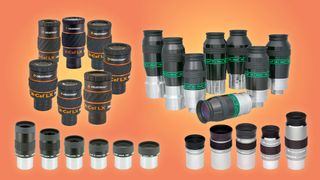
Having the best eyepieces for telescopes as part of your night sky-watching gear can really take your experience to the next level. If you're a new telescope user, you might be happy using the default eyepiece(s) that your telescope comes with. But upgrading to something better can make a world of difference, opening up your telescope's capabilities in a whole new way.
Even one of the best telescopes on the market isn't going to be performing at its best if it's paired with a disappointing eyepiece. They don't have to break the bank, either. Sure, some of the best eyepieces for telescopes can be very expensive, but we've made sure we've selected a range that encompasses all different price points to suit all budgets.
In the same way photographers have multiple lenses for their cameras, each with a specific use, astronomers also have multiple eyepieces for their telescopes. Eyepieces can offer different focal lengths and varying fields of view, making them useful in different scenarios for different types of stargazing. For example, you'll want a different eyepiece to focus on nearby targets — like the rare comet C/2023 A3 (Tsuchinshan-ATLAS), which will be visible in the night sky from October 12 through October 26 as it makes its last close approach to Earth for the next 80,000 years — than you would use to focus on much farther targets — like the elusive 'blaze star' T Coronae Borealis, located in the Corona Borealis constellation 3,000 light-years from Earth and expected to light up the night sky any night now.
And so, whether you want to look closely at the moon's craters or gaze into deep space, it pays to have a specific eyepiece that's best equipped for the job. On this list, we've brought you a selection of eyepieces, each of them suited to different types of astronomy. If you need further guidance, head to our best eyepieces for telescopes FAQs at the bottom of this page.
The quick list
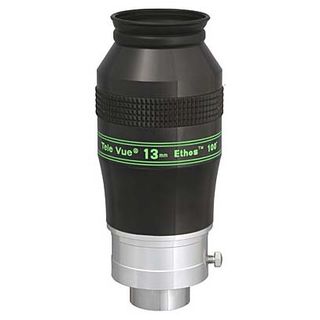
Best overall
You won't get better eyepieces than these, but they come with a big price tag. They're best for lunar and planetary viewing.
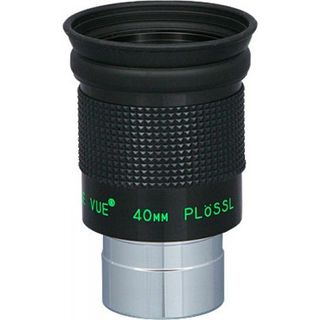
Best for optical quality
The Plossl, like all Tele Vue eyepieces, isn't cheap, but it has exceptional optical quality and performance.
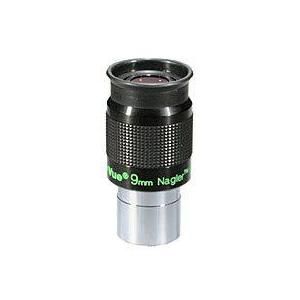
Best all rounder
No matter what type of stargazing you're wanting to do, you won't be disappointed with these eyepieces, although they are best suited to advanced or professional astronomers.
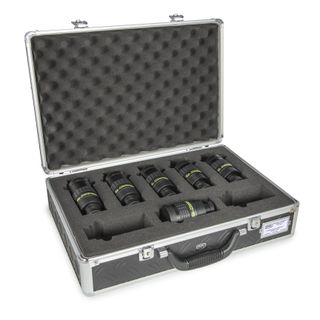
Best bundle
Why have one eyepiece when you can have seven? Provided you've got the budget to splash out on them all at once, this offers excellent value for money.
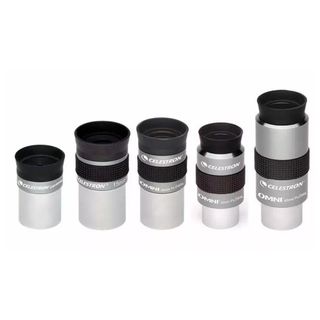
Best for range of choice
Amongst the cheapest on our list of best eyepieces, the Celestron Omni Plossl still offer excellent, clear views.
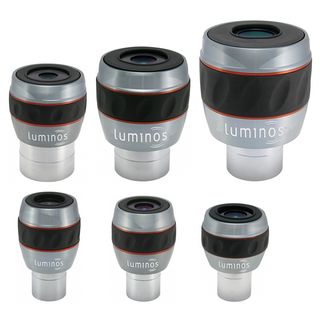
Best for eyeglasses
The eye relief on these eyepieces is unparalleled, but with excellent quality and fantastic views of the moon, planets and deep-sky objects, it's not all the Celestron Luminos has going for them.
Load the next 1 product ↴
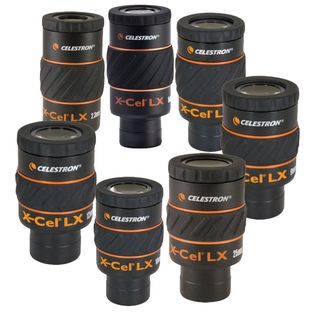
Best for high power observing
If you're observing planets or the moon, you'll love the sharpness than the multi-coated lenses of the Celestron X-Cel LX provides.
Best eyepieces for telescopes 2024
Why you can trust Space.com
Best overall
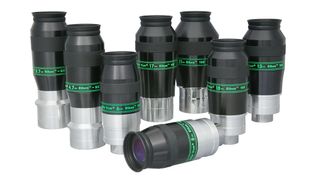
Tele Vue Ethos Eyepieces
Our expert review:
Specifications
Reasons to buy
Reasons to avoid
✅ You want the best of the best: These are possibly the best eyepieces available, so it'll come as no surprise to hear that they are very expensive. So if you want the best quality and have the money to spend these are the ones to beat.
❌ You don't have a big budget: These eyepieces come with a pretty big price tag, so you'll need a big budget to be able to afford them.
🔎 Tele Vue Ethos Eyepieces Simply the best of the best. Our only criticism is that they're very expensive — but that's what you get for the best, so we can't fault them for that. Excellent build quality, incredible optics and superb performance. ★★★★★
It should come as no surprise to you that the very best eyepieces for telescopes cost a lot of money. But if you have the budget, you really can't get any better than Tele Vue Ethos eyepieces. You get what you pay for with the Tele Vue Ethos: The quality of these eyepieces is unrivalled by anything else on the market. You really will struggle to find any other eyepiece that offers optics anywhere near as good.
The Ethos boasts an 100-degree field of view, which, coupled with the fantastic optical quality, makes viewing the night sky an absolute delight. It's one of the widest fields of view on this list, in fact, so it's something to bear in mind if getting a wide view is important. We also love how generous the eye relief is on the Tele Vue Ethos, meaning that you shouldn't have to worry if you wear glasses.
These eyepieces are compatible with Dobsonian telescopes and provide an outstanding viewing experience due to their superb optical quality. Whether you're using the Tele Vue Ethos eyepiece to gaze at star clusters or to admire a colorful nebula, you're in for an incredibly immersive journey through the night sky.
While the price of the Tele Vue Ethos eyepieces may deter some, if it fits within your budget, we strongly recommend considering purchasing one. They are indeed expensive, but in return, you get outstanding quality, performance and a truly premium product.
- Take awe-inspiring astrophotos with one of the best cameras for astrophotography
| Attributes | Notes |
|---|---|
| Design | Excellent build quality. |
| Performance | Supert optical performance and generous eye relief. |
| Functionality | Vast apparent FOV. |
Best for optical quality
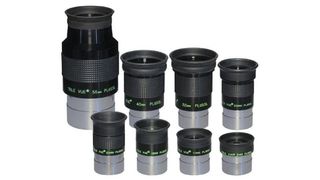
Tele Vue Plossl Eyepieces
Our expert review:
Specifications
Reasons to buy
Reasons to avoid
✅ You focus on lunar and planetary viewing: Their narrow FOV makes them fantastic for viewing details on the moon and the planets.
❌ You want to do deep sky viewing: The narrow FOV makes them great for lunar and planetary viewing but less so for deep sky observations.
🔎 Tele Vue Plossl Eyepieces They're among some of the best available, but that's reflected in the price. Brilliant for lunar and planetary viewing, but not suited for deep-sky observations. ★★★★½
Here's another entry from Tele Vue on our list of best eyepieces for telescopes. It's no wonder, really, when you consider the company's reputation for creating quality, trustworthy products.
There are some great reasons why you might choose the Plossl over the Ethos above, too. For one, these eyepieces are much more affordable and, unlike the Ethos, you can use the Plossl with with just about every type of telescope on the market.
Most importantly, despite the big price difference, we think the Plossl eyepieces still offer excellent quality, and will hugely enhance your skywatching experience.
On these eyepieces, you'll find internal anti-reflection threads, fully multi-coated lenses and blackened lens edges. Together, it means you've got some of the best eyepieces for telescopes on the market, and lenses that offer incredibly clear and sharp images.
The Tele Vue Plossl eyepieces offer outstanding performance across their entire range of focal lengths, ranging from 8mm to 50mm. They can be used with nearly any telescope you choose. With their narrow apparent field of view, they're perfect for observing planets at high magnification, enabling you to study fine details without too much sky cluttering the background.
- Enjoy the cosmos from the comfort of your living room with one of the Best star projectors
| Attributes | Notes |
|---|---|
| Design | Internal anti-reflection threads, blackened lens edges and fully multi-coated lenses. |
| Performance | Exceptional performance throughout their entire range of focal lengths. |
| Functionality | Narrow FOV makes them fantastic for lunar and planetary viewing. |
Best all rounder
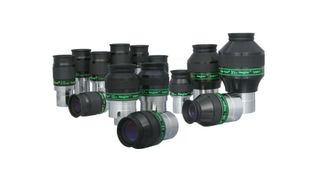
Tele Vue Nagler Eyepieces
Our expert review:
Specifications
Reasons to buy
Reasons to avoid
✅ You want the very best in optical quality: These are widely regarded as the best eyepieces available in terms of optical and mechanical quality, full stop. However, the downside of this is that they're only really accessible if...
❌ You're not an advanced user: If you consider yourself to be a beginner, enthusiast or intermediate user, you'll likely be priced out of buying these.
🔎 Tele Vue Nagler Eyepieces The creme de le creme of telescope eyepieces, but they are mostly reserved for professionals and advanced users due to their very hefty price tag. ★★★★½
Yes, the first three picks of the best eyepieces for telescopes are going to Tele Vue. There's a very good reason, however: despite these eyepieces being very expensive, they are unrivaled in their field.
The Tele Vue Nagler range offers up some of the best eyepieces you can find, designed to give the user a spacewalk-like experience. The idea? To make you forget you're using a telescope and feel like you're right there floating in the middle of space. Could you really ask for more?
The Nagler eyepieces might not be quite as expensive as the Ethos that we placed at the top of our list, but they are still rather costly. Because of that, we couldn't really recommend these for amateur stargazers: the Tele Vue Nagler are squarely targeted at professional astronomers or advanced telescope users. Unless, of course, you happen to have a very big budget and want the absolute best.
No matter the case, we're pretty sure you won't be disappointed with the Nagler eyepieces — we think they're well worth the asking price. They're wonderful no matter what you want to view: an 82-degree field of view means you've got an immersive view across the night sky, and blackened lens edges and anti-reflection threads mean you're always getting a fantastic contrast.
- Check out the Vaonis Vespera Observation Smart Station — no eyepiece required!
| Attributes | Notes |
|---|---|
| Design | Blackened lens edges and anti-reflection threads to ensure maximum contrast. |
| Performance | Designed to give the user a spacewalk-like experience. |
| Functionality | Caters to any type of viewing. |
Best bundle
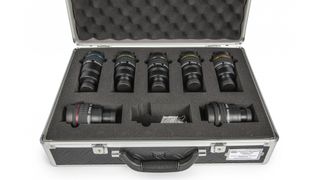
Baader Hyperion Eyepiece set with hard case
Our expert review:
Specifications
Reasons to buy
Reasons to avoid
✅ You want to do all types of observations: They offer a wide FOV, making them suitable for all types of observations, from lunary and planetary to deep sky viewing.
✅ You want the best bang for your buck: While buying the set is substantially more expensive than just buying one or two individually, you'll save money if you want all the focal lengths in the set.
❌ You're on a budget: While you do save money buying the set than purchasing each one individually, it's a pretty hefty initial investment, so not particularly accessible if you're on a budget.
🔎 Baader Hyperion Eyepiece set with hard case: Highly regarded by astronomers for its surprisingly excellent build quality and incredibly high-quality optics, including multi-coated lenses. ★★★★½
Why buy just one eyepiece when you can have a set that contains seven? We think the Baader Hyperion eyepiece set is a fantastic buy for any astronomer. Of course, it doesn't come cheap, because you're getting so many eye pieces in one go — but it means you're set up for just about every type of stargazing you could imagine, all in one swift purchase.
The Baader Hyperion eyepiece set comes in a hardy carry case, too, so you know your eyepieces are secure and safe when they're not in use. This is a set coming from a trusted brand: Bader has a reputation of creating good quality products, so you can have faith that you're going to be getting a set of well-made eyepieces.
Astronomers praise this set for its superb build quality and high-quality optics, with all eyepieces featuring multi-coated lenses. You'll find a variety of focal lengths in the full set, ranging from 5mm to 24mm. Happily, their barrel design will fit focusers between 1.25 and 2 inches, making them suitable for a wide range of users. Their wide field of view (68 degrees) is great, too, allowing users to see more of the sky in one go.
We must also praise the eye relief on the Baader Hyperion eyepieces: they're 20mm deep, making them great for people who wear glasses.
- Discover the Best accessories for astrophotographers
| Attributes | Notes |
|---|---|
| Design | Excellent build quality. |
| Performance | Produce incredibly sharp and clear images. |
| Functionality | Wide FOV makes them good for all type of observations. |
Best for range of choice
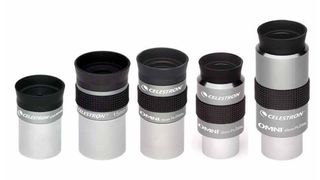
Celestron Omni Plossl Eyepieces
Our expert review:
Specifications
Reasons to buy
Reasons to avoid
✅ You're on a budget: For a four-element 1.25-inch eyepiece, they're incredibly affordable and good value.
❌ Your want to view deep sky objects: They are usable for deep sky viewing, but their narrow field of view doesn't make them the ideal choice for that. They're better for lunar and planetary observations.
🔎 Celestron Omni Plossl Eyepieces These are a fantastic entry-level range into the high-quality Plossl design. They're excellent quality, especially given the price, and provide excellent planetary and lunar views. ★★★★
Not only do we love our affordable the Celestron Omni Plossl eyepieces are — costing somewhere between $20 and $50 per eyepiece — we love that they're surprisingly great quality, too. If you're buying from a trusted brand like Celestron you don't need to break the bank to get a quality product.
Despite their budget-friendly price, you're getting a premium eyepiece here. They look stylish, and more expensive than they actually are, but most of all their build quality stands out as being exceptionally high quality. In use, they're great too, with minimal distortion and chromatic aberration. Their internal black barrels have also been designed to reduce reflections, meaning every view of the night sky is crystal clear.
You'll find different focal lengths ranging from 4mm to 56mm in the Celestron Omni Plossl range. There's a wide range of stargazing catered for then, but we have found that the Omni Plossl eyepieces are better suited for closer observations, like the moon's craters and the planets, than deep sky viewing.
They all produce beautifully sharp images, however, and given their price, we think they offer a great choice for just about any telescope user who wants to improve their astronomy experience.
- Discover the Best headlamps
| Attributes | Notes |
|---|---|
| Design | Stylish and good quality design. |
| Performance | Produce sharp and clear images. |
| Functionality | Narow FOV makes them less suited for deep sky viewing. |
Best for eyeglasses
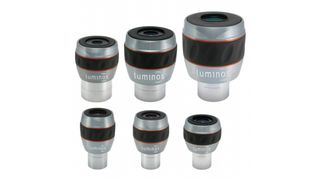
Celestron Luminos eyepieces
Our expert review:
Specifications
Reasons to buy
Reasons to avoid
✅ You wear glasses: They have 12-27mm eye relief, making them comfortable and convenient for anyone who wears glasses.
✅ You want to view a range of subjects: They're great for viewing the moon and planets, but will also serve you well when you're exploring galaxies and nebulas, too.
❌ You're on a budget: They're on the more expensive side, especially the 2-inch sizes, so if you're on a budget we'd suggest a different design.
🔎 Celestron Luminos Eyepieces They're high quality, are designed well and provide excellent views of the moon, planets, and deep-sky objects like nebulas and galaxies. They have generous eye relief and multi-coated lenses. ★★★★
The excellent Luminos range of eyepieces from Celestron has replaced the previous Axiom range of eyepieces. They're familiar, but in many ways, they're very much upgraded.
The Celestron Luminos eyepieces have a high-end design, yet they're lighter than the Axiom range they've replaced. With twist-up eyecups and parfocal eyepieces, they're a joy to use, allowing for easy transitioning between high and low-power views without needing much refocusing.
The Celestron Luminos eyepieces have blackened edges and multi-coated lenses which leads to them providing excellent contrast. We think they have some of the best light transmission on the market as a result, too. The 82 degree field of view is also excellent, giving a beautiful and immersive view of the night sky.
However, it's worth noting that while most of the Celestron Luminos eyepiece range is available in 1.25 to 2-inch barrel sizes, the 19mm, 23mm and 31mm are only available for 2-inch barrels.
- Like Celestron? Check out Celestron Telescope and Binocular deals
| Attributes | Notes |
|---|---|
| Design | Upgraded, more high-end design than it's predecessor. |
| Performance | Great for viewing the moon, planets and deep sky objects. |
| Functionality | Comfortable eye relief. |
Best for high power observing
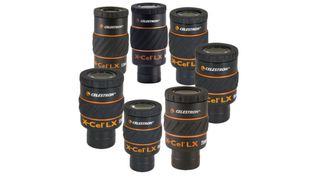
Celestron X-Cel LX Eyepieces
Our expert review:
Specifications
Reasons to buy
Reasons to avoid
✅ You want to observe the planets: These large magnification eyepieces are ideal for observing the moon and planets.
✅ You wear glasses: They feature a generous 16mm of eye relief, making them comfortable for users with glasses.
❌ You want twist-up eyecups: These have fold-up eyecups, whereas the pricier X-Cel versions have twist-up eyecups.
🔎 Celestron X-Cel LX Eyepieces We think this is a good quality, reasonably-priced choice that's definitely worth considering. They are well suited to high-power observing and the image quality is great. ★★★½
The Celestron X-Cel LX eyepieces come in seven different focal lengths, all ideal for high-power observations of planets and moons. Despite this, their wide apparent field of view of 60 degrees allows you to navigate the sky easily, no matter what you're observing.
We love the image quality of the Celestron X-Cel LX eyepieces. They offer sharp and high-contrast views, and their generous 16mm eye relief makes them a good choice for glasses-wearers (or simply anyone wanting to settle in for an extended stargazing session). It's worth noting that these particular eyepieces are fold-up eyecups: the pricier X-Cel versions come with twist-up eyecups. Look for the 'LX' at the end to distinguish the difference.
Thanks to being fully multi-coated and having a blackened interior, the Celestron X-Cel LX eyepieces offer fantastic contrast, minimized reflections and the best possible light transmission. All of that goes to say that the views through the X-Cel LX eyepieces are clear and bright.
A rubber grip around the middle of the barrel provides a secure grip, so you're less likely to drop them when swapping between eyepieces, which is especially useful if you're wearing gloves. Overall we think this is a good quality, reasonably-priced choice that's definitely worth considering.
- Need a telescope? Check out the Best telescopes for seeing planets
| Attributes | Notes |
|---|---|
| Design | Fully multi coated optics. |
| Performance | Great image quality with sharp and well-corrected views. |
| Functionality | Generous 16mm eye relief. |
Best eyepieces for telescopes FAQs
What is a telescope eyepiece?
Telescope eyepieces are small, hand-held lenses that we place at the telescope's focus to bring the image into sharp focus for our eyes to observe. They are available in a variety of different types and designs. They also come in various focal lengths, determining the effective magnification. Focal lengths of anywhere between 3mm to 50mm are widely available.
What types of telescope eyepieces are there?
Various lens designs are widely used for telescope eyepieces — Plossl, Kellner, Orthoscopic and Radian are the most popular. A number of companies today also offer multi-element designs on a custom basis.
What size eyepiece do I need for my telescope?
There are three popular sizes of eyepiece barrel diameters: 0.96-inches, 1.25-inches and 2-inches. Almost every telescope can accept eyepieces of one of these sizes. The 1.25-inch size is the most widely used among manufacturers. Check your manual to see which size your telescope is compatible with.
Do I need anything else besides a telescope eyepiece to view the stars?
Yes. You will need a telescope and a tripod in order to view the night sky. We have plenty of guides and pages available to help you pick the right product. Looking for a telescope? Try our guides to the Best Telescopes, Best telescopes for beginners and more niche instruments like the Best telescopes to see planets or the Best telescopes for deep space.
Or seek out the latest deals with our pages on Budget telescopes under $500 or the Telescope deals page.
What do telescope eyepiece numbers and terms mean?
Here is a basic telescope glossary that explains the most common terms and numbers:
Focal length — The eyepiece's focal length (usually measured in mm) The larger the number, the lower the magnification it will provide (the subject will not appear as close up).
Barrel diameter — Eyepieces come in 0.96-inch, 1.25-inch or 2-inch barrel sizes.
Magnification — The power the eyepiece provides with your telescope (this will vary depending upon the telescope.)
Apparent FOV — The apparent field of view is measured in degrees. In general, eyepieces with a large apparent field will cost significantly more but provide an almost '3D-like' viewing experience, especially for deep sky observing of extended objects. A wider field of view allows you to see more of the sky at once.
Eye Relief — Usually described in mm, this tells you how far your pupil must be from the rear element of the eyepiece to see the entire field of view. A longer eye relief gives a more enjoyable viewing experience, especially if you wear glasses where you physically won't be able to get your pupil as close as non-spectacle wearers.
Exit Pupil — The figure (also usually in mm) describes the size of the light cone at the eye relief position. Our dark-adapted pupil is never larger than 7mm, so any exit pupil size above this level is wasted light.
Coatings — Eyepieces with multi-coatings offer better contrast and brightness than eyepieces with no coatings.
How we test
To guarantee you're getting honest, up-to-date recommendations on the best eyepieces to buy here at Space.com, we make sure to put every eyepiece through a rigorous review to test each instrument thoroughly. Each eyepiece is reviewed based on many aspects, from its construction and design, to how well it functions as an optical instrument and performs in the field.
Each eyepiece is carefully tested by our expert staff or knowledgeable freelance contributors who thoroughly know their subject areas. This ensures fair reviewing is backed by personal, hands-on experience with each eyepiece and is judged based on its price point, class and destined use.
With complete editorial independence, Space.com are here to ensure you get the best buying advice on eyepieces, making our buying guides and reviews reliable and transparent.
Join our Space Forums to keep talking space on the latest missions, night sky and more! And if you have a news tip, correction or comment, let us know at: community@space.com.
Get the Space.com Newsletter
Breaking space news, the latest updates on rocket launches, skywatching events and more!
Damian A. Peach FRAS is a British amateur astronomer, astrophotographer, lecturer and author. Best known for his photographs of a wide variety of astronomical objects. His career in the field spans over thirty years. Peach's passion for Astronomy first began in 1988 inspired by books in his school library. Later he joined the British Astronomical Association (BAA) in 1996 and since then has contributed large amounts of observations to the various observing sections and also written and co-authored many papers in the organization's journal. He was awarded the organization's prestigious Merlin Medal in 2006. The same year he was also awarded the Association of Lunar and Planetary Observers (ALPO) Walter H. Haas award for his contributions. Peach has provided astronomical images for magazines and books throughout his career. His images have been featured in Astronomy Magazine, Sky & Telescope, Astronomy Now & The Sky at Night. He has also authored articles on astrophotography for these magazines. Peach has also been a co-author on several professional scientific papers on planetary astronomy, especially regarding work on Mars and Jupiter. He was one of only a few amateur astronomers to have work featured as part of the national Explorers of the Universe exhibition at the Royal Albert Hall in 2007. His work has also appeared at the Edinburgh Science Festival, and The Royal Greenwich Observatory. Peach's work has also been used by NASA and ESA to illustrate what ground-based telescopes can achieve in photographing the planets, and the support they can provide to professional space probe missions.
- Kimberley LaneContributing writer
- Tantse WalterContributing Writer
- Kimberley SnaithFreelance contributor
